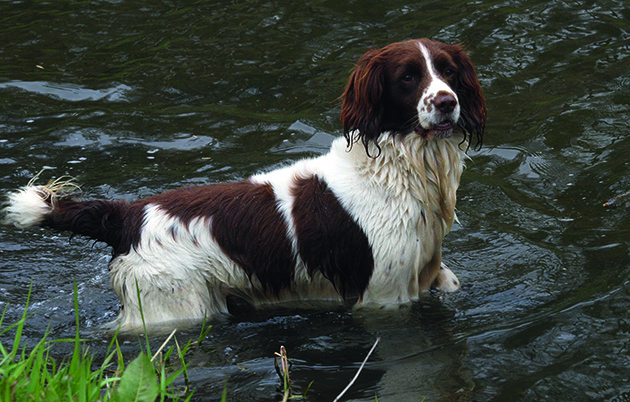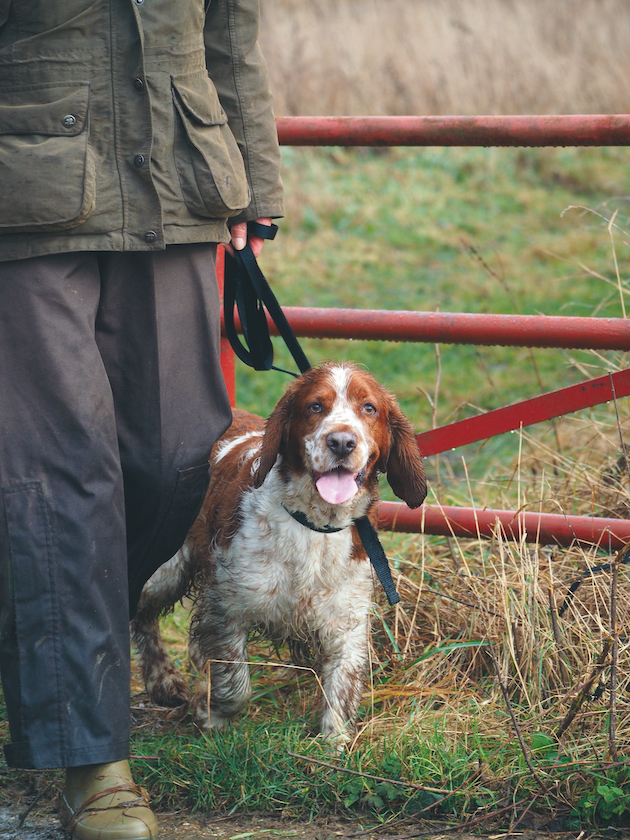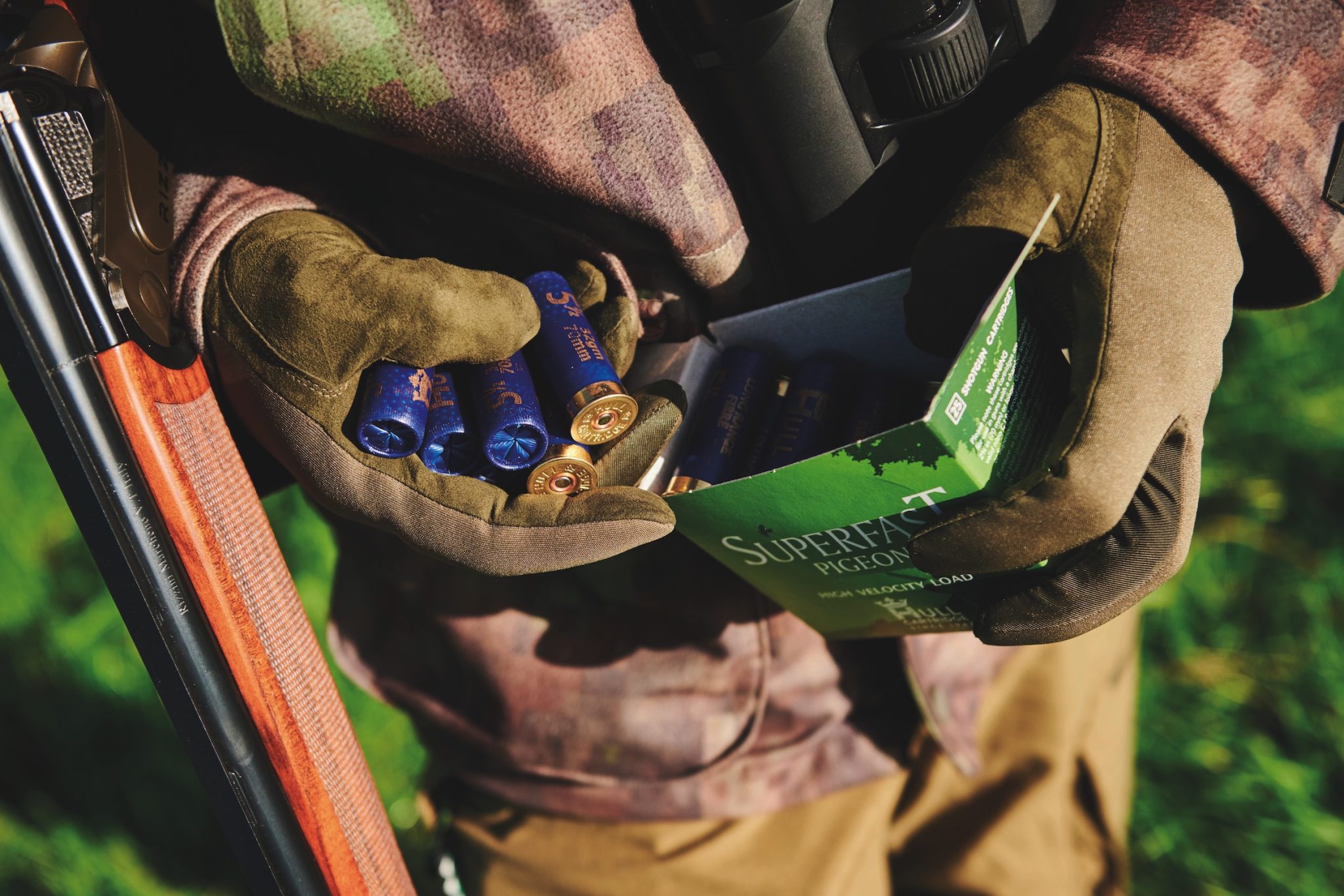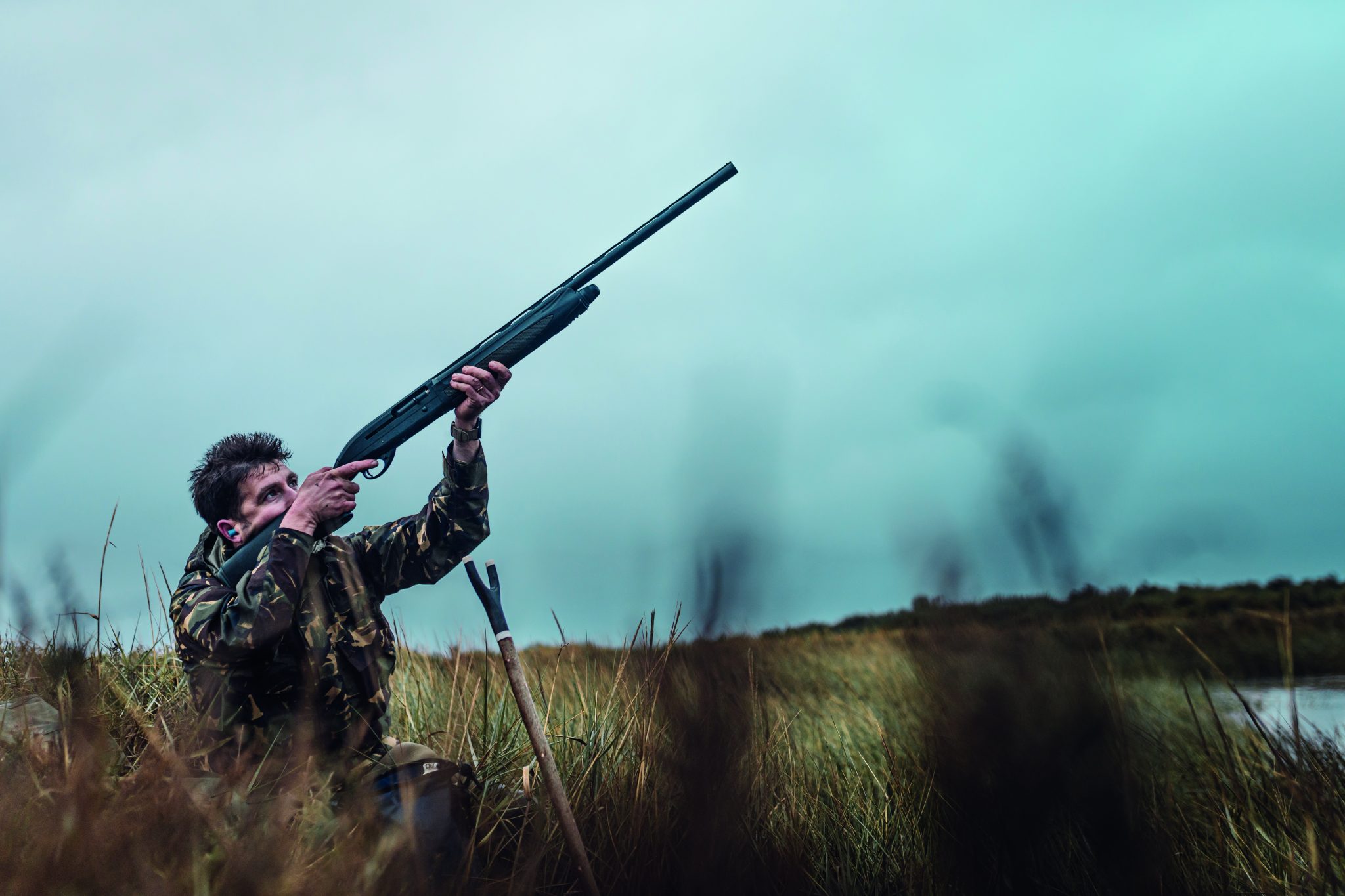Win CENS ProFlex DX5 earplugs worth £1,149 – enter here
How to keep your gundog safe on a shoot
 Working a dog in water has many hazards
Working a dog in water has many hazards
We’re in the middle of the shooting season now and I thought it would be time to offer some advice on how to keep your gundog safe. Accidents, as we all know, do happen to working dogs, however careful you might be. I reckon that I’ve been pretty lucky over the years, as I’ve only had to abandon a day’s shooting and rush a dog to the vet for emergency treatment three times.
On all three occasions, the cause of the accident was a collision, twice with a broken branch. The worst of these was when my bitch impaled herself on a sharp stick, the latter penetrating the skin on her underside for 6in. This was in the early days of mobile phones. Fortunately, a fellow beater had one, so by the time I arrived at the surgery 25 minutes later, the vet was ready and waiting, and her life was saved.
We were 30 miles from home, so the surgery we went to wasn’t one I had ever been to before. However, the service was excellent and I was able to collect my stitched and subdued spaniel the next day. It was an experience that brought home to me the importance of knowing where the nearest veterinary surgery is and having the number stored on your phone. It’s simple stuff, but it might save your dog’s life in the event of an emergency. (Read how to make your dog vomit in an emergency.)

Keeping your dog on a lead between drives makes sense
Keep your gundog safe
Most accidents are simply that, as there’s not much you can do about them, however careful you are. But there are many ways you can reduce their likelihood to a minimum.
The golden rule to keep your gundog safe is to keep your dog close to you at all times, except when it is actually working. The simplest way to do this is to keep it on a lead. (Read our tips on how to use a slip lead properly.) Every year, dogs get run over on shoots, most often by off-road vehicles belonging to Guns, beaters or pickers-up, sometimes by passing farm vehicles. Keep a special wary eye out for Kubotas and similar RTVs (rough terrain vehicles). They are frequently used as game carts and youngsters love driving them at reckless speeds.
As much of a danger as vehicles on the shoot are those on local roads next to where you might be picking-up. Unless you are 100% confident that you can stop your dog on the whistle, never, ever work it close to a road. The pheasant you thought was dead might be a runner and it’s almost inevitable it will run towards a road with your dog in hot pursuit as a delivery van in a hurry suddenly appears.
I used to pick-up on a shoot where one of the drives had a road directly behind it. It was a long-established drive and one of the shoot owner’s favourites, which was why he insisted on doing it. The road, once a quiet country lane, had become quite busy, something the shoot owner hadn’t apparently noticed, or if he had he didn’t care. Dead pheasants falling into the road were a serious danger to passing cars, while none of the picking-up team dared let their dogs off, so all retrieving had to be done by hand. It was not good practice.
Railway warning
My wife is a regular beater on a local shoot where the gamekeeper — a dog enthusiast — doesn’t allow any dogs in the beating line. This is a sensible decision, for several of the drives are close to the road, so the chances of a beating dog straying on to the road are simply too high. It’s not only the dog’s safety you have to consider. A dog running on to a road is quite likely to cause a serious accident.
Railway lines are another menace, as they are rarely so securely fenced that a determined spaniel can’t force its way through. I used to beat on a shoot in Kent that had no roads to worry about, but it did have a main railway line on its boundary. It was always a concern, so I never enjoyed working the spaniels there. On one occasion, a fellow beater lost her springer during a drive, the last before lunch. I abandoned my sandwiches and joined her searching for the errant spaniel, all the time fearing the worst. After a worrying half hour, we found the dog alive — a huge relief.
Water is another serious danger. Many years ago, I was shooting in Scotland when my dogs decided to try to swim across a raging torrent, not the sort of hazard they were familiar with at home in Kent. I never thought that they would make it, but fortunately they were both strong swimmers, eventually emerging from the river 100 yards downstream from where they entered it. Of course, the only way for them to return was to repeat the manoeuvre, which was equally frightening. I do know of a cocker that was drowned while trying to cross a river on Exmoor, a reminder of the dangers of fast-flowing water.
Frozen ponds and lakes are possibly even more of a hazard. Typically, the dog ventures out across the ice to retrieve a bird, the ice breaks and the dog falls in. The handler then tries to rescue the dog, often with fatal consequences for the former, while the latter somehow manages to escape. Unless you know that the ice is thick enough for ice skating, don’t go anywhere near it. It’s simply not worth the risk. Keep your gundog safe.
Related Articles
Get the latest news delivered direct to your door
Subscribe to Shooting Times & Country
Discover the ultimate companion for field sports enthusiasts with Shooting Times & Country Magazine, the UK’s leading weekly publication that has been at the forefront of shooting culture since 1882. Subscribers gain access to expert tips, comprehensive gear reviews, seasonal advice and a vibrant community of like-minded shooters.
Save on shop price when you subscribe with weekly issues featuring in-depth articles on gundog training, exclusive member offers and access to the digital back issue library. A Shooting Times & Country subscription is more than a magazine, don’t just read about the countryside; immerse yourself in its most authoritative and engaging publication.







